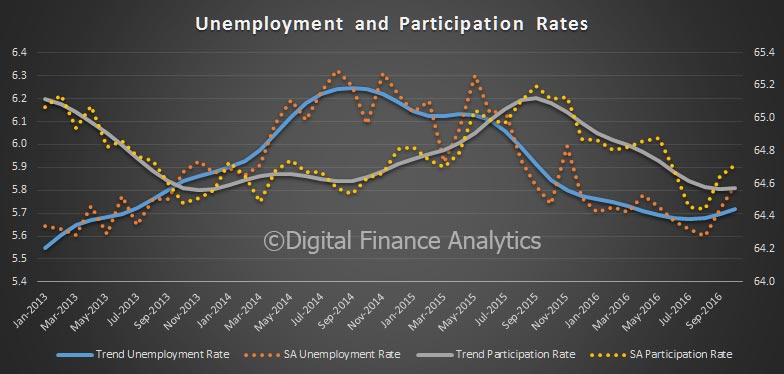Monthly trend full-time employment increased by 7,000 in Australia in December 2016, according to figures released by the Australian Bureau of Statistics (ABS) today. Whilst employment growth remains sluggish, this was the third consecutive month of increasing full-time employment.
But the rotation to part-time work continues, the seasonally adjusted unemployment rate rose to 5.8% and the seasonally adjusted participation rate rose to 64.7%.
Total trend employment increased by 8,200 persons to 11,966,800 persons in December 2016, reflecting an increase in both full-time (7,000) and part-time (1,100) employment. However, year-on-year employment growth was 0.7 per cent, which was less than half the average growth, of 1.8 per cent, from the past 20 years.
“Over the past year we have seen a shift towards part-time employment, particularly in the first half of 2016. There are now around 120,900 more people working part-time than there were a year ago, and around 35,300 fewer people working full-time. Since December 2015, the share of part-time employment increased from 31.1 per cent to 31.9 per cent,” said the General Manager of the ABS’ Macroeconomic Statistics Division, Bruce Hockman.
The trend unemployment rate was 5.7 per cent for the ninth consecutive month.
The trend participation rate was unchanged at 64.6 per cent.
The trend monthly hours worked increased by 2.3 million hours (0.1 per cent), with increases in total hours worked by both full-time workers and part-time workers.
Trend series smooth the more volatile seasonally adjusted estimates and provide the best measure of the underlying behaviour of the labour market.
The seasonally adjusted number of persons employed increased by 13,500 in December 2016. The seasonally adjusted unemployment rate increased by 0.1 percentage points to 5.8 per cent, and the seasonally adjusted labour force participation rate increased by 0.1 percentage points to 64.7 per cent.

